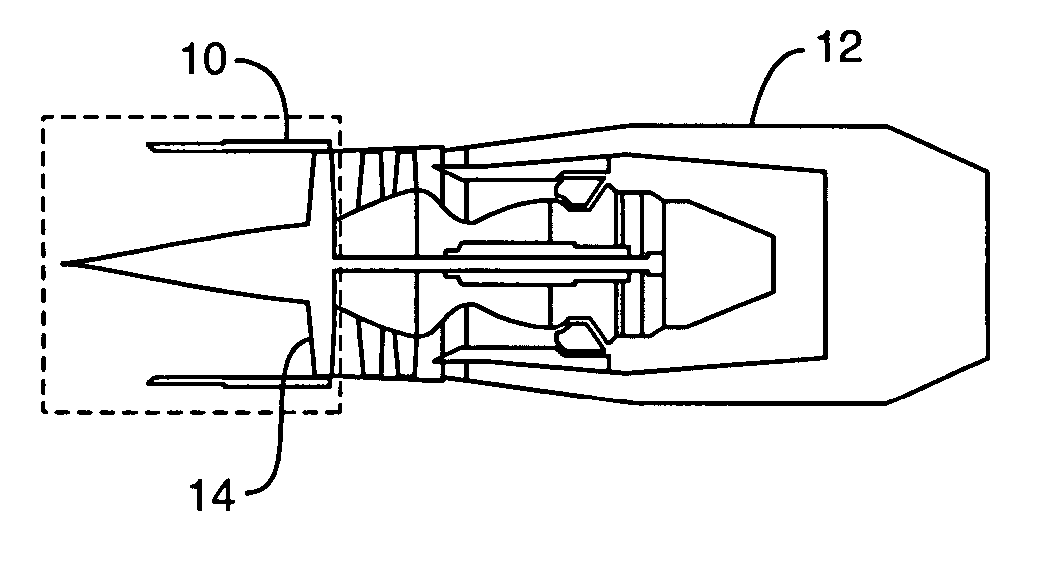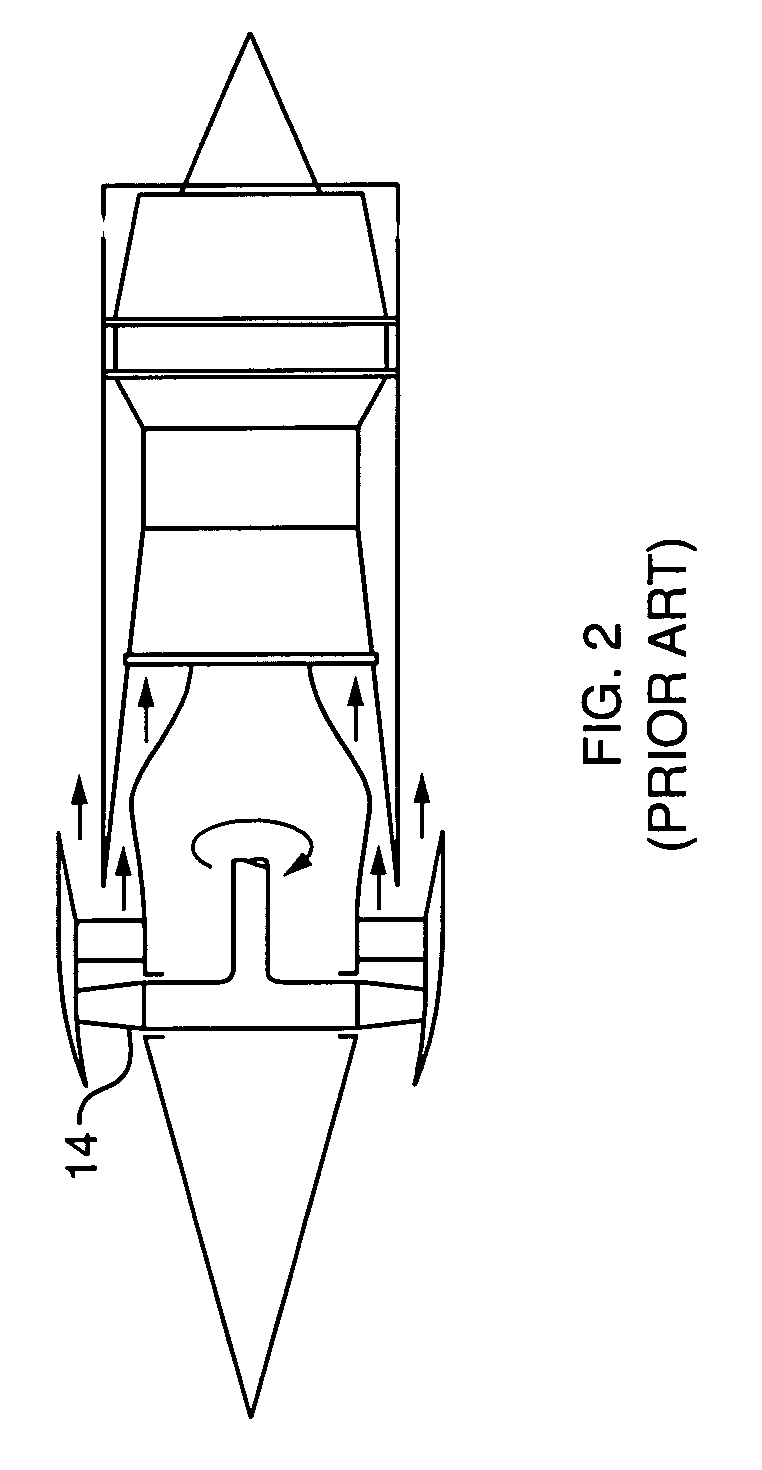Jet engine inlet-fan system and design method
a jet engine and fan system technology, applied in the direction of machines/engines, supersonic fluid pumps, stators, etc., can solve problems such as performance penalties and implementation challenges, and achieve the effects of improving efficiency, reducing maintenance costs, and improving efficiency
- Summary
- Abstract
- Description
- Claims
- Application Information
AI Technical Summary
Benefits of technology
Problems solved by technology
Method used
Image
Examples
Embodiment Construction
[0019] With reference now to FIG. 3 an engine 12 according to the invention includes a relatively short inlet (about half the length of a conventional supersonic inlet) section 10 and a fan 14 designed by the methods discussed below. The engine 12 is designed for use on supersonic aircraft having speeds typically on the order of Mach 2 or greater / lesser. Freestream air at Mach 2 or greater enters the inlet 10 and is decelerated to a Mach number ranging from approximately 1.2 -1.3 at the entry face of the fan 14. In this embodiment, the fan 14 decelerates the flow from the absolute frame supersonic velocity at its face to a subsonic velocity such as about Mach 0.5 at its exit. Not only does the fan 14 decelerate the flow from supersonic to subsonic conditions, the fan 14 also adds work to increase the stagnation pressure of the flow to a selected value. The subsonic flow leaves the fan 14 and enters the core engine as is well understood in the art.
[0020] The design procedure for an ...
PUM
 Login to View More
Login to View More Abstract
Description
Claims
Application Information
 Login to View More
Login to View More - R&D
- Intellectual Property
- Life Sciences
- Materials
- Tech Scout
- Unparalleled Data Quality
- Higher Quality Content
- 60% Fewer Hallucinations
Browse by: Latest US Patents, China's latest patents, Technical Efficacy Thesaurus, Application Domain, Technology Topic, Popular Technical Reports.
© 2025 PatSnap. All rights reserved.Legal|Privacy policy|Modern Slavery Act Transparency Statement|Sitemap|About US| Contact US: help@patsnap.com



